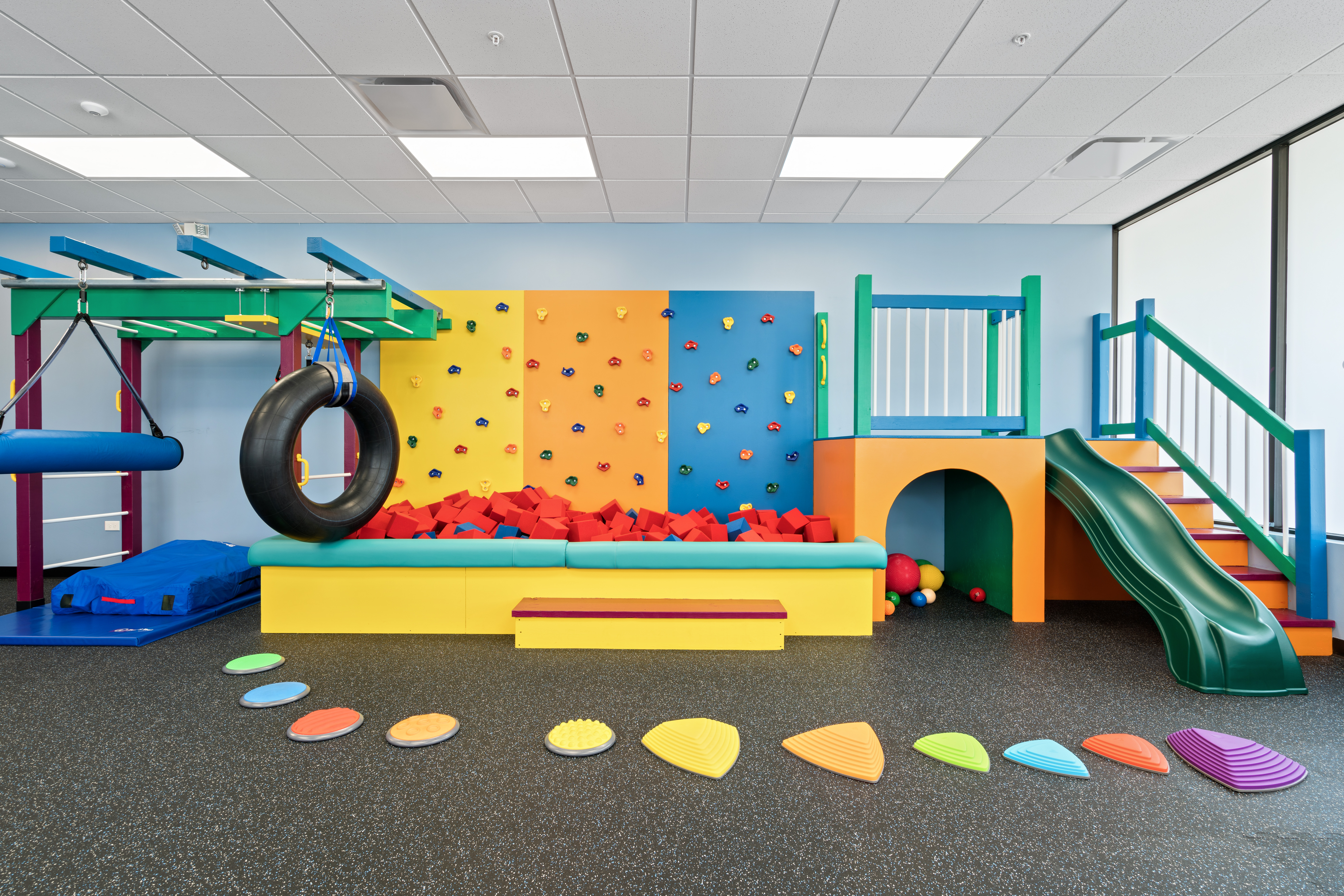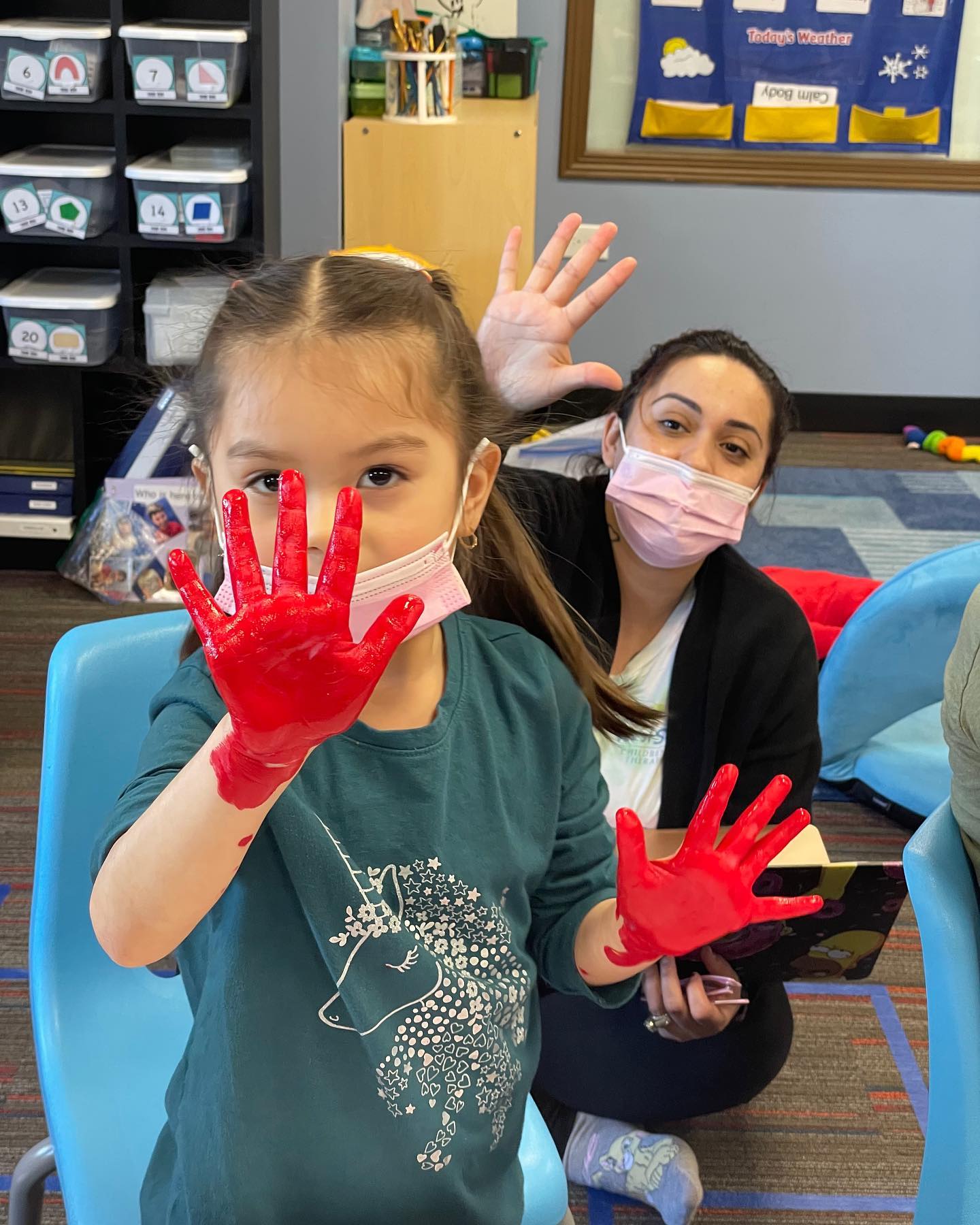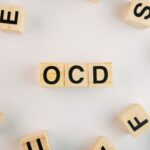Kids occupational therapy at Westside Children’s Therapy is meant to be fun while reaching therapeutic milestones.
On the surface, it may look like fun and games, but each kid is working hard toward their personal goals in kids occupational therapy plans. You may just see a child do an obstacle course, but they’re really working toward: being able to follow directions and sequencing, building strength (ex. To be able to sit in a chair at school), and getting in a routine, and more.
You may just see a kid finger painting. However, that child is making great strides toward developmental/sensory-based milestones.
And those are just a couple of the ways having fun in kids occupational therapy can lead to life-changing results. Below are 3 fun activities that are done in OT to help kids reach their therapeutic goals and developmental milestones.
We’ll start with the two kids occupational therapy activities we already mentioned.
- Painting and coloring
Painting and coloring are great activities that we use in kids occupational therapy. It can be used to target many different areas of focus for a child.
Just a few examples of what it can work on includes: Improving fine motor skills, strength, attention, ability to sit at a table to participate in activities or school work.
How does it work?
Just like with other activities in therapy at Westside, our therapists find ways to incorporate the child’s preferred toys, characters, etc. in the kids occupational therapy sessions. For the example of painting, the child may paint/color Elmo or their favorite Disney character.
From there, we begin targeting the areas being worked on.
For sensory needs:
To target this area, Westside therapists may have a child fingerpaint during the kids occupational therapy session! This can be a fun way for the child to be able to tolerate being messy or getting their hands dirty, or other sensory feelings on their hands.
Playing with paint may be a more motivating activity for a child to work on their sensory aversions. These aversions can be affecting meal time with eating/touching certain foods, and this can be worked on in Occupational Therapy.
When is a sensory aversion something that may need therapy? Let’s look at it through a different lens. Here are a couple small examples
Everyone has different sensory preferences, but not all of them require therapy. Are you someone who likes lotion on your hands? Or are you someone who avoids it, or if you do use it, you maybe even pat dry it after putting it on?
Do you or your child hate to wear jeans and prefer sweatpants or shorts?
We all have likes and dislikes, but if it is something impedes your ability to do something or go about your day/school/playing with friends, then that is when we need to either work on tolerating the task or come up with a different way to reach that goal. And therapy is an option.
For fine motor skills/strength:
For younger kids, or one’s that have hand weakness/have fine motor skill challenges, this impacts their ability to hold a crayon, marker or pencil. This can cause challenges for a child in a school environment.
With coloring, our therapists can use adaptive utensils to help children build strength and then begin to work on holding the utensil correctly. A broken crayon, grippers or smaller utensils are just a few of the adaptations that are used to help a child develop a functional grasp.
Our therapists also like to develop hand strength in a more fun, play-based way for kids occupational therapy. Children will color in different positions, which also mixes up the activity. Kids may lay on their belly to color which works on back and arm strength or can stand, sit, or kneel and color against the wall which helps them develop shoulder/scapular stability and endurance necessary for successful participation in school.
Changing the positioning during fine motor and visual motor activities also helps develop a child’s visual and vestibular skills that are necessary for play, school related, and self-care activities.
Our eye muscles have a great impact on our daily tasks, too, so we have to work those muscles like we do others.
- Obstacle Course

Obstacle courses are frequently used in kids occupational therapy as they can be used with children of various ages and diagnoses and they target many different skills. Obstacle courses target skills including but not limited to: strengthening, sequencing/following directions, motor planning/coordination, and body awareness, all while providing sensory input for regulation.
Social skills can be targeted by including more than one child in the course. Fine motor and visual motor activities can even be incorporated! Obstacle courses can be graded or modified to achieve “just the right challenge” for that particular child.
Not only are obstacle courses a great way to target therapy skills, but they are also very motivating for the child. For example, an activity such as going a scooter back-and-forth 10 times may be much less motivating and exciting than riding the scooter, 10 bounces on the trampoline, walking across the tiles, going across the zipline to finish the course.
This helps keep the child engaged and attentive. It’s also an activity that our therapists and kids like to start sessions with as it regulates the child and prepares their body for the remainder of the session.
It becomes their routine and they can feel prepared and know what they are going to do. The therapist may change the steps to work on different things, but the child knows they are going to start with an obstacle course.
Think about how you start your day at work… There is probably a routine you have that allows you to comfortably start your day: Do you check your emails first thing? Do you return phone calls? Do you have a morning meeting that you always have to go to?
The unknown, for anyone, can be scary and cause anxiousness. For a typically developing child or adult, they can make it through and adjust. For some, this can result in behavior challenges.
That is why it is important for the kids who start their day with an obstacle course to stick with that as their routine for kids occupational therapy. Our therapists can change parts of it to work on the child’s flexibility with changes. Similar to how every email or phone call you make to start your day may vary.
- Scooter Boards
Scooter boards are popular in kids occupational therapy and physical therapy as it helps build strength and coordination.
A common question our therapists get is…
“We come in because they are having a hard time at school. What does the scooter board have to do with school?”
The answer? It may help give the child strength to sit at a table or their desk. Kids with weaker necks or backs can typically be the ones that lay their head on the desk, or can’t sit still without falling out of the chair.
Scooter boards can also be used to develop fine motor skills for kids occupational therapy plans. Though, a child needs the posture control before they can work toward developing the strength to hold a pencil.
The scooter boards also help with motor planning in figuring out how to move your body to get where it needs to go. It also is “heavy work” which can be calming and regulating to a child. By incorporating other functional activities into scooter board tasks, the therapist can target executive function skills such as sequencing/following directions, memory, attention, etc.
The skills and strength gained from scooter board activities are necessary for not only improvements in sitting at the table for school related activities, but also self-care activities such as sitting down for meal time and self-feeding or even getting dressed!
Activities for a kid to incorporate the scooter board
As previously mentioned, scooter boards can be incorporated into obstacle courses for kids occupational therapy. They can also be used with other motivating activities such as board games (going back and forth to gather game pieces or cards in between turns), tic-tac-toe, races, puzzles, picking rings or navigating cones, etc. They can even be used to transition between activities or between therapy spaces.
These are just a few examples of how we make kids occupational therapy fun and engaging for our children. A child’s occupation is play. Therefore, play is the main means of achieving our therapeutic goals!
If you’re looking to get started at Westside for kids occupational therapy, click the button below!







